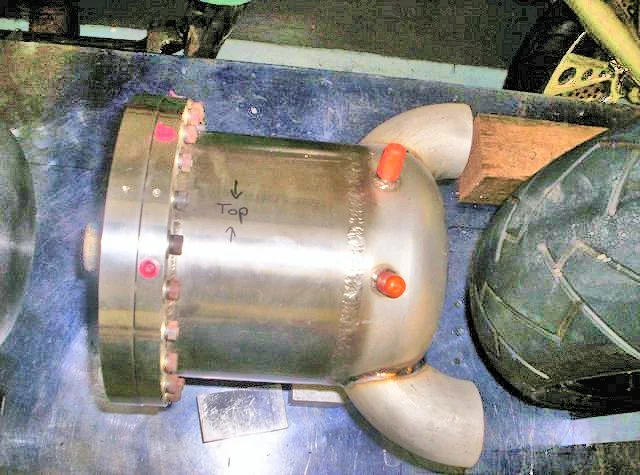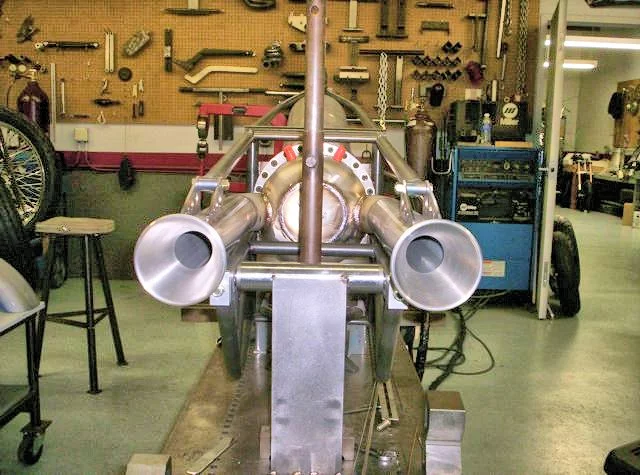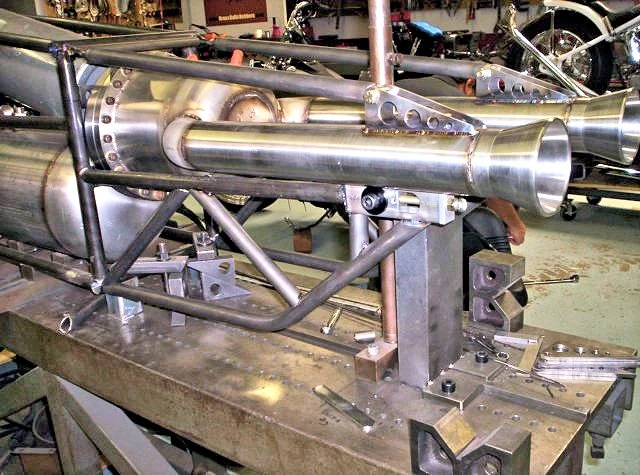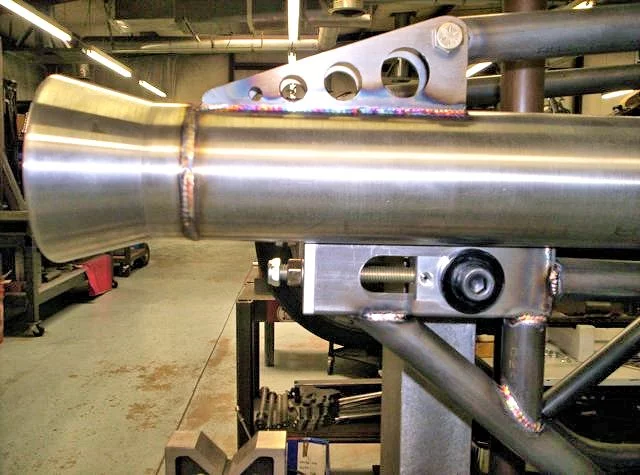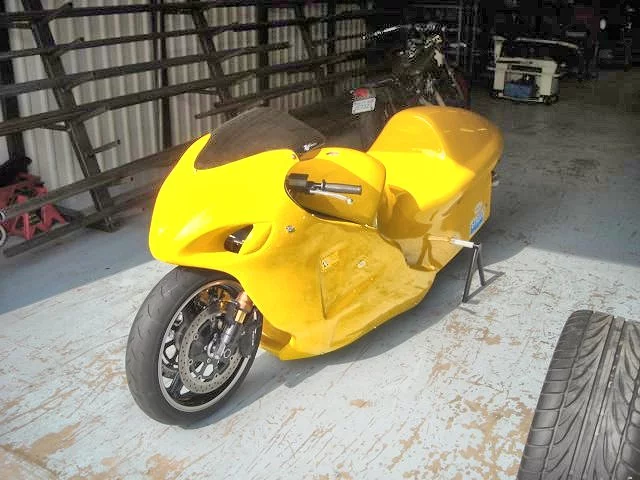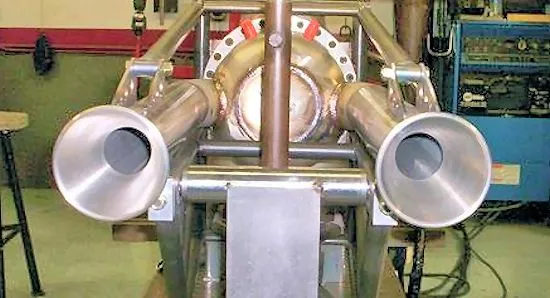A state-of-the-art rocket-powered motorcycle that was recently advertised for sale on eBay has been sold to Gerd Habermann Racing. Engineered to hit speeds in excess of 400 mph (640 km/h) during the quarter-mile, the bike was designed and built by Glenn Brittian, one of the few drivers licensed by the National Hot Rod Association to drive a rocket dragster. The asking price was US$27,000, but the actual selling price has not been made public.
While we tend to think of manned rockets in terms of spaceflight, adventurers have been using them to power other vehicles for nearly a century. In the late 1920s, Fritz von Opel, of the Opel automobile family, built rocket cars, rocket trains, rocket gliders, rocket snow sleds, and the first known attempt at creating a rocket-powered motorcycle, imaginatively called the Raketen Motorrad (RM – Rocket Motorcycle).
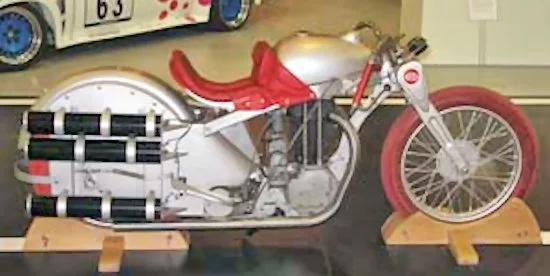
The RM was built on a 500cc Opel Neander SuperSport motorcycle. The Opel Neander was propelled by a one-cylinder 500cc engine that produced a massive 22 hp. Opel modified the Opel Neander by adding mounts for six (later fourteen) rockets fueled with compressed smokeless powder. The estimated top speed was 220 km/h (140 mph), but a full speed run was never attempted due to the intervention of the Weimar government, which thought the whole idea was too dangerous.
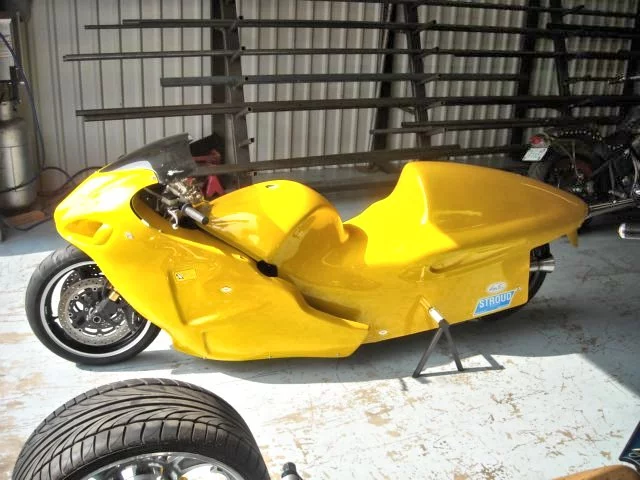
Many other rocket motorcycles have been made since that time, some for racing and speed, and a few to support motorcycle jumps. Brittian's rocket motorcycle is designed as a dragster from the frame outwards – it is not intended to turn under power, nor will it run more than quarter-mile time trials and drag races. It is built for one thing alone – speed.
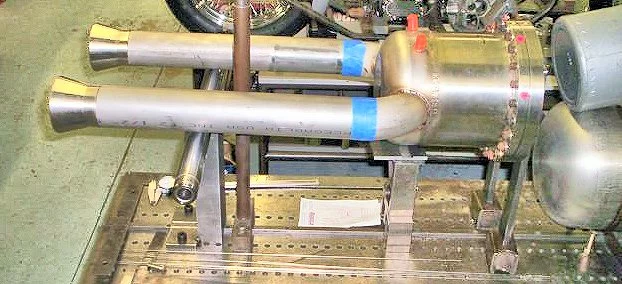
Brittian's rocket motorcycle is powered by a dual nozzle rocket engine providing a design maximum of 3500 pounds (15.6 kN) of thrust. When running at that thrust it eats about 30 lb (14 kg) of fuel every second, sucking the fuel tank dry after the few seconds of a quarter-mile drag. The rocket engine uses high-test (80-98 percent pure) hydrogen peroxide. Hydrogen peroxide does not burn when used in a rocket engine, but passes by a catalyst that makes it decompose into water and oxygen. The water released is converted into steam at about 1100° F (870° C), which then exits through the nozzle producing thrust.
It has become nearly impossible in recent years to buy high-test hydrogen peroxide (in the United States sales to the public have even been banned by the Department of Homeland Security), so it is often concentrated by various methods. As the concentration process is perhaps more dangerous than handling and using hydrogen peroxide, it is not to be undertaken lightly.
This series of photographs taken during construction show many additional details of the rocket system as well as the bike itself. The motorcycle has been tested with a smaller engine producing about half the thrust, and has hit speeds in excess of 220 mph (354 km/h) in the quarter-mile. The full design that Mr. Habermann has bought is designed to hit speeds of over 400 mph (640 km/h) in the quarter mile. The real question is can the rider hold on at such speeds? Time will tell, if the bike doesn't blow up first!
Source: Rocket Crusade via eBay

